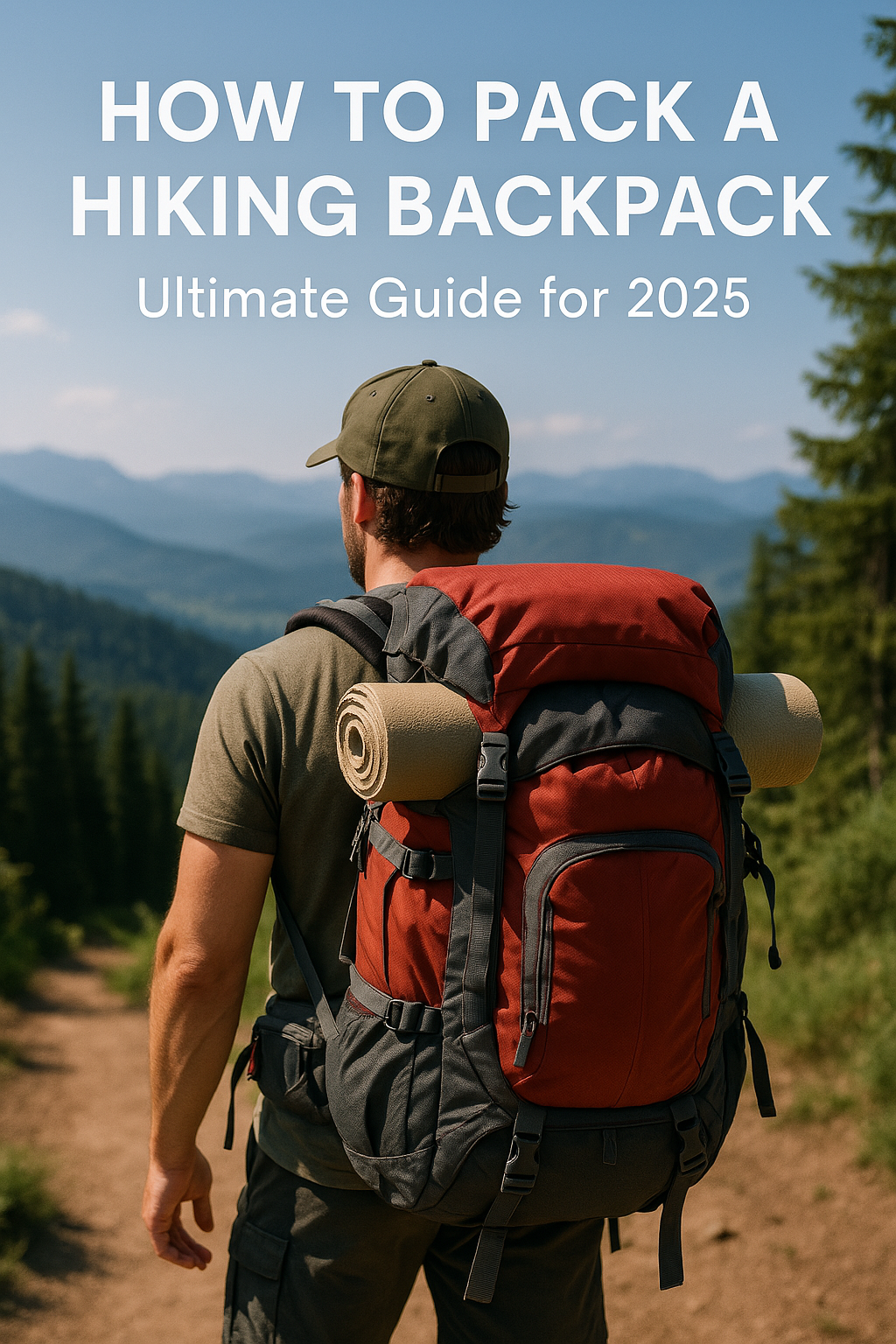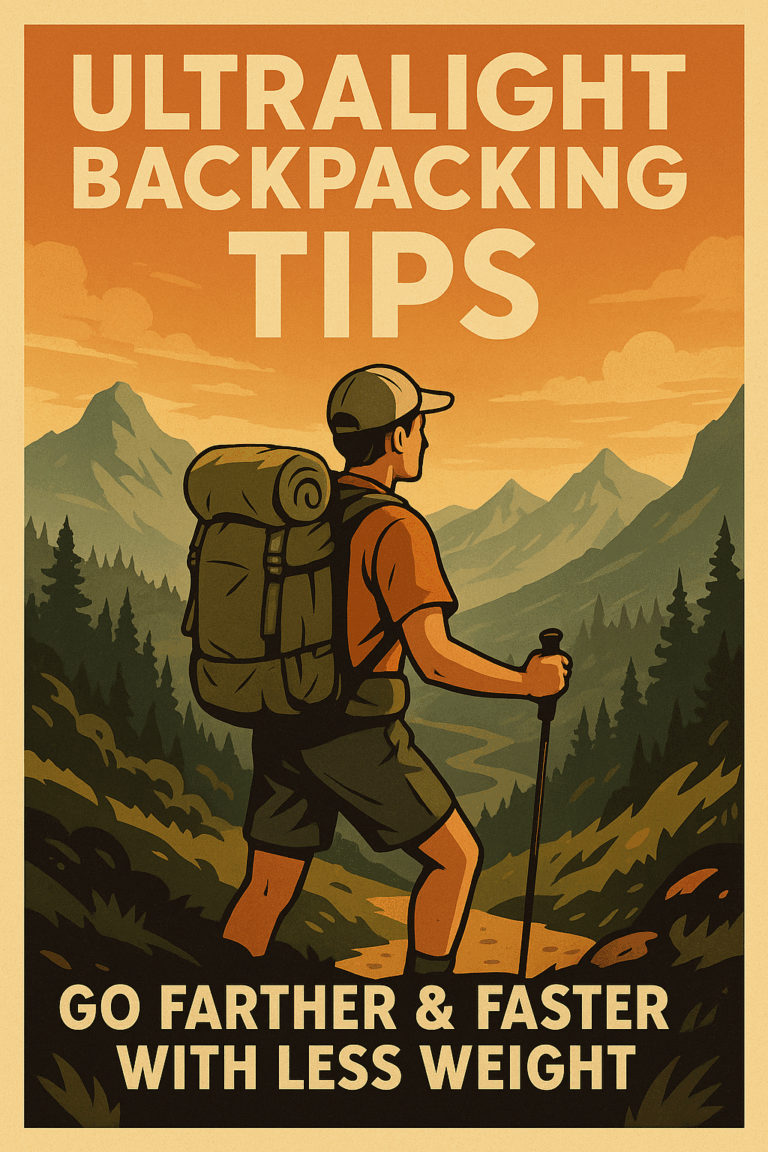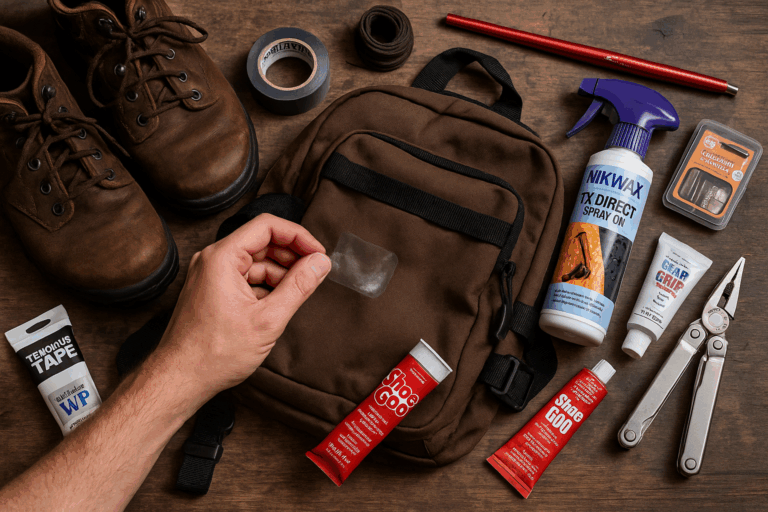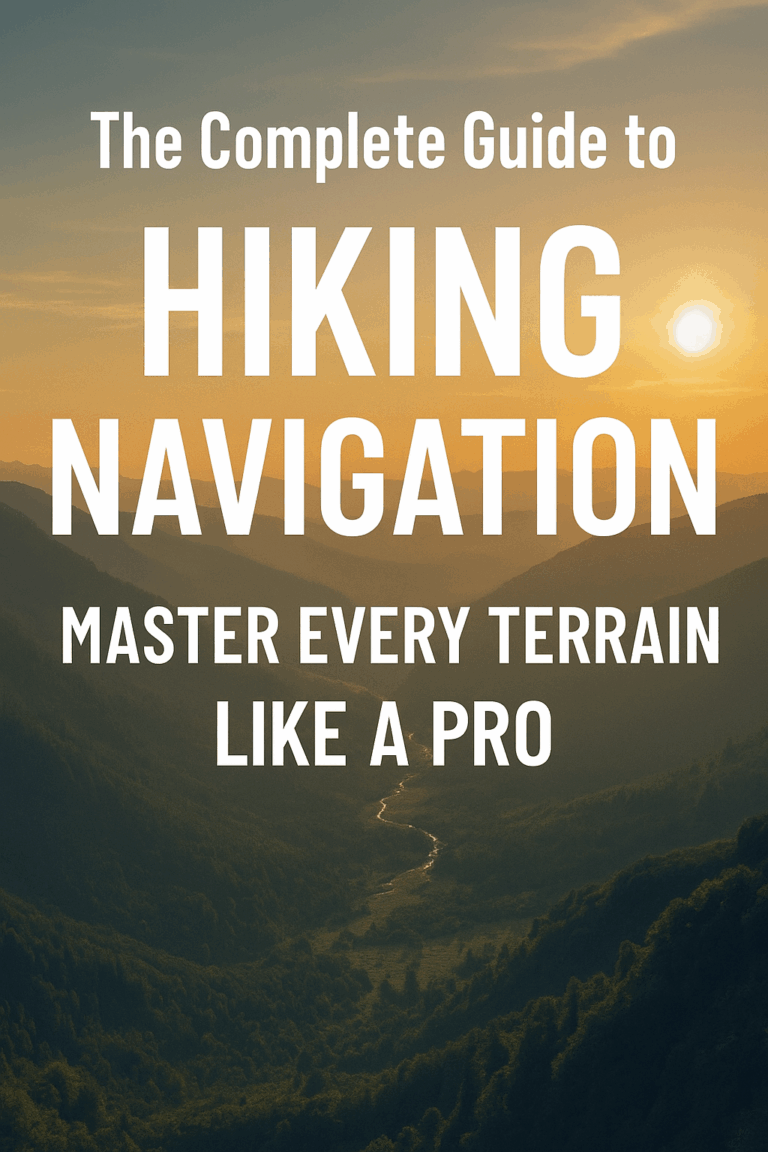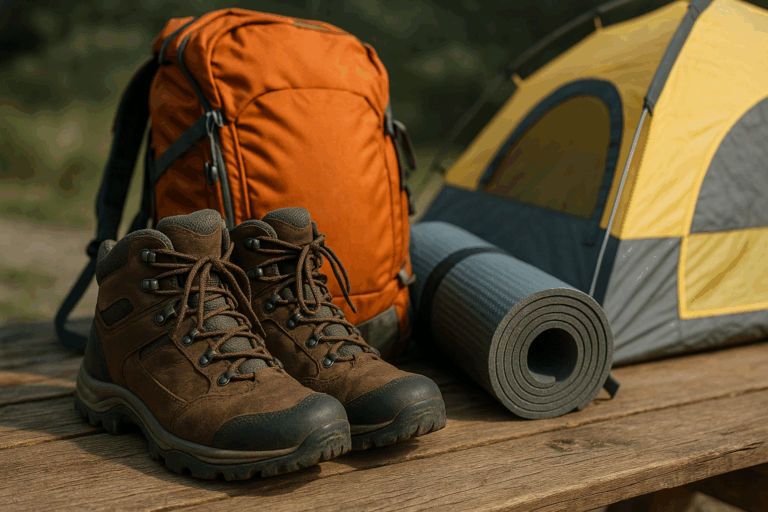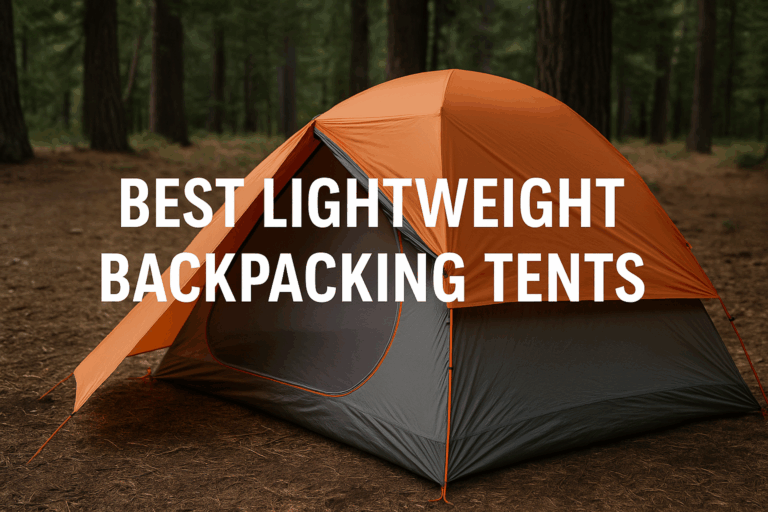How to Pack a Hiking Backpack for Multi-Day Hiking Trips
Introduction
Picture this: you’re at the trailhead, excited for adventure. But your backpack feels awkward after just five minutes! We’ve all been there. Learning how to pack a hiking backpack properly isn’t just about cramming gear inside. It’s an art that makes or breaks your hiking experience. A study by the Outdoor Industry Association found that improper backpack weight distribution is among the top reasons hikers cut trips short. Whether you’re planning a day hike or a week in the backcountry, mastering hiking backpack organization keeps you comfortable and prepared for wilderness challenges. Let’s dive into the essential techniques for how to pack a hiking backpack effectively!
Understanding Your Backpack’s Anatomy
Getting to Know Your Pack
I’ve stared at backpacks in stores for hours trying to figure them out. Why do some fight me while others feel natural? It hit me during a weekend trip watching friends struggle with their packs. Understanding your pack’s anatomy makes a huge difference when learning how to pack a hiking backpack correctly.
The Main Compartment
The main compartment is your pack’s stomach. It holds most of your gear and forms the foundation of strategic hiking gear placement. When I started backpacking, I’d stuff everything in without thinking about backpack weight distribution technique. This created a jumbled mess. Finding anything became impossible. I once stood in the rain digging for my jacket while everything got soaked. Not my finest moment! Now I know the main compartment works best for bulky items you won’t need until camp – sleeping bag, extra clothes, and food bags. This is the first step in mastering how to organize a backpack for hiking effectively.
The Lid and Top Pockets
The lid (or brain) might seem like a small addition, but it’s my favorite feature when figuring out how to pack a hiking backpack for quick access. Those zippered pockets on top? Perfect for hiking essentials placement – snacks, sunscreen, hiking first aid kit placement, and headlamp. The easy accessibility makes a huge difference on the move. I learned this when I packed my headlamp deep in my pack and had to set up camp in darkness. The best way to pack a backpack for hiking includes thoughtful placement of items you’ll need throughout the day.
Hip Belt and Shoulder Strap Pockets
Hip belt pocket utilization changed my hiking life. No exaggeration. These small pockets keep essentials at your fingertips and are crucial for trail accessibility. I store my phone, chapstick, and quick-access gear organization for small snacks in them. Before discovering these magical pockets and perfecting my hiking backpack organization, I’d stop and take my pack off for photos or quick snacks. So annoying!
Side Pockets and External Storage
Side pockets are game-changers too when learning how to distribute weight in a hiking backpack. Usually made of stretchy mesh, they’re perfect for hydration system placement, trekking pole attachment methods, or a wet rainfly. Angled side pockets are easier to reach while hiking. This means I actually stay hydrated instead of avoiding the hassle. In any backpack external attachment guide, these pockets are essential components.
Internal Frame Structure
The internal frame structure seemed unimportant until my shoulders screamed after a 12-mile day. Good packs have aluminum stays that transfer weight from shoulders to hips – a fundamental principle in how to pack a hiking backpack properly. This means employing smart backpack loading techniques – heavy stuff centered against your back to maintain backpack center of gravity. When I started implementing proper hiking comfort packing tips and backpack weight balancing techniques, my pack seemed to lose 5 pounds!
Compression Systems
Compression straps look like random webbing, but they’re essential to how to pack a hiking backpack properly. These backpack compression techniques prevent disasters by securing your load and bringing weight closer to your body. I ignored them once on a technical hike. My pack swayed so much I nearly fell over on a ridge. Lesson learned! Mastering pack weight balancing techniques includes using every compression strap available.
Volume Considerations
Understanding backpack volume was a revelation in my journey to learn how to pack a backpack for backcountry hiking. My first pack was 65 liters. It seemed great until I brought unnecessary stuff just to fill it. For weekend trips, 40-50 liters is plenty when using lightweight backpacking techniques. For longer treks or winter hiking pack organization, 55-70 liters makes sense. Your pack’s volume should match your needs, not the other way around. This is critical knowledge for any backpacking packing guide.
Access Points and Zippers
Accessibility features became crucial during a rainy Cascades trip. Side zippers let me grab my puffy jacket without unpacking everything. Bottom compartment zippers are perfect for sleeping bags. My old pack lacked these, and bedtime setup always ended in a frustrating gear explosion.
Understanding these features transformed my hiking from a shoulder-aching ordeal to something enjoyable. Get to know your pack’s anatomy. Your back will thank you, and you’ll spend less time rummaging and more time enjoying the views.
The Fundamental Principles of Backpack Packing
The Painful Path to Proper Packing
I thought throwing gear into my backpack was no big deal. Just cram everything in and go, right? Wrong. After a miserable hike in the Smokies with my back feeling stabbed by invisible knives, I finally learned how to pack a hiking backpack properly. It changed everything. Understanding backpack loading techniques is worth the effort.
The Zone System Explained
Let’s talk about the “backpack zone packing system” – something I wish someone had explained years ago when I was learning how to distribute weight in a hiking backpack. Think of your pack as having three zones: bottom, middle, and top. This approach to backpack weight distribution technique makes packing logical instead of a frustrating puzzle. Any comprehensive backpacking packing guide starts with this system.
The Bottom Zone Basics
The bottom zone works best for overnight hiking essentials placement you won’t need until camp. For years, I packed my sleeping bag wherever it fit, ignoring proper sleeping bag packing position. Usually on top, making my pack top-heavy and awkward. Now I always pack my sleeping bag and sleep clothes at the bottom. This zone also holds camp shoes and other lightweight items for setup. This is fundamental to how to pack a hiking backpack correctly.
The Critical Middle Zone
The middle zone is your pack’s core and the key to how to pack a backpack for backcountry hiking successfully. Put the heaviest gear here: hiking food storage placement, cooking equipment, and bear canister packing strategy. Keeping these items centered against my back improved my backpack center of gravity instantly. On my first hike using this method of hiking backpack weight distribution, the difference shocked me. My shoulders didn’t hurt by mile three. I could enjoy the scenery instead of adjusting my pack constantly. This approach is vital in any backpack load distribution guide.
The Convenient Top Zone
The top zone holds items you might need during the day – rain jacket, first aid kit, extra layers, lunch, or snacks. This is crucial for quick-access gear organization when learning how to pack a hiking backpack. Before using this system of hiking gear accessibility, I’d waste time unpacking half my gear just for a granola bar. Now everything has its place in my strategic hiking gear placement plan. I can grab what I need without creating a gear explosion on the trail.
Weight Distribution Fundamentals
Backpack weight distribution technique isn’t just about zones. Keep heavy items close to your back. This fundamental principle of how to pack a hiking backpack took me a while to understand. At first, I packed heavy items toward the outside because they seemed to fit better there. Big mistake! Weight far from your back creates leverage that pulls backward. This strains your shoulders and throws off balance. Any backpack weight distribution diagram would show this critical error.
Finding Your Center of Gravity
Understanding backpack center of gravity transformed how I pack a hiking backpack. Your pack’s center of gravity should align with yours – between your shoulder blades. When I started packing with this in mind, implementing proper hiking backpack weight distribution, my 45-pound pack suddenly felt manageable. Now I hike longer with less fatigue and enjoy true hiking comfort.
Left-to-Right Balance
Left-to-right balance matters as much as front-to-back when learning how to balance a hiking pack. I learned this when I packed all my cooking gear on one side, violating basic principles of how to pack a hiking backpack. My hip hurt after just a few miles. Your body compensates for imbalance in ways you won’t notice until you’re injured. I now divide my pack mentally and distribute weight evenly on both sides, following proper backpack weight balancing techniques.
The Magic of Compression
Compression makes good packing great. After organizing everything in the right zones, cinch down all straps to prevent shifting. A wobbly pack tires you quickly. I use stuff sacks for clothing and squeeze out excess air before packing. For my tent, I distribute it evenly rather than creating lumps that throw off balance.
The principles I’ve learned through trial and error have transformed backpacking from an endurance test to an enjoyable experience. Pack heavy items in the middle zone, close to your back. Keep left-to-right balance. Use all compression options. Your body will thank you, and you’ll have energy left to enjoy those hard-earned views.
Essential Gear Organization by Zone
Learning the Hard Way
I never thought much about hiking backpack organization until a miserable Yosemite trip. My shoulders burned, my lower back felt kicked by a mule, and I constantly unpacked everything for basic items. That painful experience changed how I pack a hiking backpack completely. Understanding wilderness backpack organization became my new priority.
Bottom Zone: Night Camp Essentials
The bottom zone of your pack is nighttime headquarters in any hiking gear organization system. This is where my sleeping bag goes, even though I used to ignore proper sleeping bag packing position and stuff it anywhere. Think about it – you won’t need your sleeping bag until camp. It makes sense to keep it at the bottom when following the best way to pack a backpack for hiking. I use a compression sack to make it compact and save space – a key backpacking packing tip.
Sleeping Pad Placement
My sleeping pad goes here too, alongside or on top of my sleeping bag. If you use an inflatable pad like I do now (after years with a bulky foam pad), it packs down small. Camp clothes go in the bottom zone too. I keep them in a waterproof stuff sack. Nothing’s worse than putting on damp clothes after a long hiking day. Been there, got the hypothermia to prove it!
Middle Zone: Core Weight Management
The middle zone demands strategic thinking. This is your pack’s core. It should hold the heaviest items. When I started, I’d put heavy stuff wherever it fit. Usually at the bottom or top. My back suffered! Now I put the heaviest items in the middle, centered against my back at shoulder blade height.
Food and Cooking Equipment
Food typically weighs most, so my food bag goes right in the center. My cooking gear sits alongside or below the food. If I carry a water reservoir, it goes against my back in this section. A full reservoir weighs 2-3 pounds. Positioning it correctly makes a huge difference in comfort.
Avoiding the Outside Edge Mistake
One mistake I made for years: placing heavy items toward the outside of my pack. This creates a pulling effect that strains shoulders and ruins balance. Keep heavy stuff close to your back. It’s truly game-changing!
Top Zone: Quick-Access Essentials
The top zone is prime real estate for quick-access items. My rain jacket always goes here. When it pours, you don’t want to dig through your entire pack. I once got caught in a thunderstorm with my rain gear buried deep. I ended up soaked. Never again!
Safety and Comfort Items
My first aid kit, sunscreen, bug spray, and daily snacks live in the top zone or lid compartment. My headlamp goes here too. I’ve set up too many tents in darkness after misjudging hiking times. A thin layer like a fleece deserves top placement for chilly breaks or sudden weather changes.
External Attachment Strategy
External attachments need strategy. I’ve seen hikers with so much dangling gear they look like walking yard sales! While most items belong inside, some make sense outside. My foam sitting pad straps to the outside. It’s light and protects pack contents. Trekking poles attach to the side when not used. My tent might go outside if it’s wet from morning dew.
Bear Canister Challenges
Bear canisters present special challenges. These hard containers are mandatory in many areas. They’re bulky and inflexible. After trying various positions, I find the middle zone works best, centered and close to my back. Some people pack items inside their canister to save space. I find this makes food access difficult during the day. Instead, I pack my canister separately and arrange other gear around it.
Managing Bulky Shelter Components
For bulky items like tents, I split components. The poles go vertically along the internal frame. The tent body stuffs around other gear to fill empty spaces. If the rainfly is wet, it might strap outside to dry while hiking.
Zone organization saved my back and made backpacking enjoyable rather than torturous. When packed properly, your backpack feels like an extension of your body instead of a burden. That’s the difference between reaching camp exhausted or arriving ready to enjoy the wilderness.
Waterproofing and Weather Protection Strategies
Hard Lessons in the Rain
I learned about proper waterproofing the hard way on a backpacking trip in the Olympic rainforest. Three days of constant drizzle revealed how my “water-resistant” pack wasn’t so resistant after all. Opening my backpack to find soggy clothes and a damp sleeping bag taught me a critical lesson about rain protection for backpack contents. This experience completely changed how I pack a hiking backpack in wet environments.
Effective Pack Cover Usage
Pack covers seem simple, but I made rookie mistakes with mine. I’d only pull it out when rain was already pouring. Now I know better. At the first sign of dark clouds, that cover goes on. A good pack cover should fully extend over your pack with a cinch system at the bottom. But they aren’t foolproof. Water seeps in where the cover meets your back, especially in heavy downpours or wet vegetation.
Pack Liners: Your Waterproofing Foundation
After that Olympic disaster, I added a pack liner – a large waterproof bag inside my pack. I use heavy-duty trash compactor bags. They’re thick, durable, and cheap. Place it inside your empty pack, then load your gear. Before closing, squeeze out excess air and twist the top tightly. Fold it over for a waterproof seal. This system saved my gear multiple times, especially during a Cascades river crossing gone wrong when my pack got partially submerged.
Liner Bags vs. Individual Dry Bags
The liner bag versus individual dry bags debate has occupied me for years while perfecting how to pack a hiking backpack. Liner bags offer simplicity – one bag protects everything. They’re lightweight and cheap. The downside? Once opened in rain, everything inside gets exposed. Individual dry bags keep items separately protected but add weight and bulk from multiple material layers. Both approaches are valid backpacking packing tips for weather protection.
The Hybrid Approach
After trying both systems, I now use a hybrid approach to rain protection for backpack contents. A pack liner provides primary defense in my backpack waterproofing system. Individual dry bags protect critical items. When learning how to pack a backpack for backcountry hiking, always remember that my sleeping bag gets its own dry bag. A wet sleeping bag can be dangerous in cold weather. My down jacket goes in another because wet down loses insulation value. Extra clothing gets a third bag. Electronics go in a small, reliable dry sack. This comprehensive approach to backpacking waterproofing is worth the minimal extra weight.
Protecting Electronics
Hiking electronics protection needs special attention when learning how to pack a hiking backpack. My phone goes in a ziplock even inside its dry sack – belt and suspenders approach. My headlamp gets similar treatment since batteries hate water. During a Hoh River Trail trip, my extra-protected camera was the only one in our group that survived a week of constant moisture. This level of protection is essential when implementing backpacking waterproofing strategies.
Quick-Access Rain Protection
Quick access to rain gear is non-negotiable in my approach to how to pack a hiking backpack for changing weather. My rain jacket always goes in the top section or an outer pocket where hiking gear accessibility is maximized. I can grab it without opening my main compartment. Nothing’s worse than getting soaked while digging for rain protection! I also keep a packable hat with a brim in an accessible pocket. It’s amazing how much drier you feel when rain doesn’t hit your face directly. These strategic hiking gear placement choices make a huge difference in comfort.
Seasonal Waterproofing Adjustments
Seasonal considerations significantly affect my approach to how to pack a hiking backpack. In summer backpacking gear placement, when showers might be followed by sunshine, I focus on quick-access rain gear and protecting electronics. My sleeping bag might stay in its normal compression sack to save space. In spring and fall, when rain persists and temperatures drop, complete waterproofing becomes crucial. Everything gets full protection because drying things is harder in cool, damp conditions. These seasonal adaptations represent the best way to pack a backpack for hiking in various weather scenarios.
Winter-Specific Considerations
Winter hiking pack organization brings unique challenges. Snow melts and seeps into packs. Waterproofing remains important, but I worry equally about keeping gear from freezing. My water filter, electronics, and liquid fuel stay in inside pockets where body heat prevents freezing. I learned this after my water filter cracked during an unexpected Sierra cold snap. These winter-specific backpacking packing tips can save your expedition from disaster.
The Camp Towel Trick
One trick for multi-day wet trips: bring a small absorbent camp towel as part of your strategy for how to pack a hiking backpack in rainy climates. It weighs almost nothing but wipes down wet gear before packing. This prevents moisture buildup inside your pack day after day and extends the effectiveness of your backpack waterproofing system.
The peace of mind from knowing your essential gear stays dry regardless of conditions is worth the extra packing care. Few things turn a great wilderness experience miserable faster than wet gear miles from shelter. A damp sleeping bag taught me that lesson once – I’ve made sure it never happens again. Learning proper rain protection for backpack contents is fundamental to how to pack a backpack for backcountry hiking.
Specialized Packing Techniques for Different Hike Types
Adapting to Your Adventure
I’ve packed and repacked my backpack hundreds of times over the years, employing various trail-tested packing methods. I’ve slowly realized there’s no one-size-fits-all approach to how to pack a hiking backpack. How I pack for a quick day hike differs completely from my backpack setup for long hikes in the Rockies. Years of trial and error taught me different systems for different adventures and environments.
Day Hike Essentials
Day hike backpack organization seems simple, but I used to either overpack like an expedition or underpack and end up hungry and thirsty. Now I’ve mastered how to pack a hiking backpack for day trips. For day hikes, I use a small 18-20 liter pack. I implement proper hiking backpack weight distribution by placing heavy items (water and food) in the middle, close to my back. Keeping my 2-liter water reservoir centered in my pack improves comfort even on shorter hikes by maintaining proper backpack center of gravity.
Day Pack Organization
The top section of my day pack holds “just in case” items – a small first aid kit, rain shell, headlamp, and extra layer. The bottom section carries my food for the day in a single container to prevent squishing. Side pockets and hip belt pockets hold quick-access items like snacks, sunscreen, and my phone – this hip belt pocket utilization strategy keeps essential items within reach. One mistake I made for years in day hike backpack organization: not bringing proper layers. I once got caught in an unexpected storm on an easy 5-mile loop. I shivered for hours because I hadn’t properly learned how to pack a hiking backpack for changing conditions.
Weekend Trip Optimization
Weekend backpacking trips need more strategy when learning how to pack a hiking backpack efficiently. My 45-liter pack works perfectly for 1-3 nights of backpacking gear packing. I follow the backpack zone packing system but adapt it specifically for shorter trips. With less food, weight distribution becomes simpler. I still pack my sleeping bag and pad at the bottom in proper sleeping bag packing position. The tent body often goes there too, with poles along the inside edge for stability. This approach to backpack loading techniques balances weight properly.
Weekend Load Management
The middle zone carries food (usually in a stuff sack, not a bear canister, for weekend trips), cooking system, and water – essential elements of how to distribute weight in a hiking backpack. For weekends, I’ve stopped bringing “extra” clothing using lightweight backpacking techniques. One set for hiking, one for sleeping, and maybe extra socks is enough. This cut pounds from my load. The top zone holds rain gear, first aid kit, and daily snacks. On my last Adirondacks weekend, my pack weighed just 28 pounds with food and water, down from the 40+ pounds I used to carry! Learning the best way to pack a backpack for hiking dramatically lightened my load.
Extended Expedition Approach
Extended backcountry expeditions present bigger challenges when learning how to pack a hiking backpack for multi-day treks. My first 10-day trip, my pack was so heavy I barely lifted it into my car! Now I approach multi-day hike packing with careful planning and ruthless elimination of non-essentials. For trips over 5 days, I use my 65-liter pack and become extremely methodical about wilderness backpack organization. This thru-hiking pack strategy focuses on balancing weight and accessibility.
Long-Trip Food Strategy
Hiking food storage placement becomes critical on longer trips. In my current approach to how to pack a hiking backpack for extended journeys, I pack the first few days’ food at the top of my middle zone for easy access. Later days’ food goes below. I vacuum-seal meals to reduce bulk and provide additional rain protection for backpack contents. My clothing strategy for extended trips focuses on versatility, not quantity – a key principle in lightweight backpacking techniques. One pair of convertible pants, one short-sleeve shirt, one long-sleeve shirt, one insulating layer, one rain layer, two pairs of underwear, and two pairs of socks. Everything gets worn multiple times. Not glamorous, but this backpacking gear packing approach works!
Desert Environment Adaptations
Different environments demand different approaches to how to pack a hiking backpack. For desert hiking water storage, capacity becomes the priority in your backpack loading techniques. I adjust weight distribution to accommodate extra water containers, keeping them centered and close to my back to maintain proper backpack center of gravity. I also pack my shelter near the top. I’ve often needed quick shade during breaks. A neck gaiter, wide-brimmed hat, and extra sunscreen go in my top zone for frequent access. These desert hiking adaptations represent specialized hiking comfort packing tips for arid environments.
Mountain Environment Considerations
Mountain environments taught me specialized approaches to how to pack a hiking backpack for alpine conditions. I organize my pack with quick layering in mind for mountaineering pack organization. Rain gear and warm layers stay in accessible pockets or the very top to enhance hiking gear accessibility. I once got caught in a surprise summer snowstorm in Colorado because my warm layers were buried deep. That was a cold lesson in alpine backpacking strategies! Learning from this experience improved my approach to backpack weight distribution technique in mountainous terrain.
Forest and Rainforest Techniques
Forest environments, especially rainforests, require meticulous application of how to pack a hiking backpack for wet conditions. My hiking backpack organization centers on keeping essential gear dry with a comprehensive backpack waterproofing system. The pack liner becomes non-negotiable for rain protection for backpack contents. I add extra protection for my sleeping bag and electronics. I separate shelter components, keeping the rainfly accessible for quick camp setup during downpours. These trail-tested packing methods have saved countless trips in wet environments.
Ultralight Packing Philosophy
Ultralight backpacking completely changed my approach to how to pack a hiking backpack. When cutting weight seriously, ultralight backpack organization becomes even more important with minimal gear. Without traditional bulk, ultralight backpack packing tips focus on maximizing limited space. My sleeping quilt still goes at the bottom but takes up less space than a traditional bag. The ultralight backpacking techniques I’ve adopted have transformed my hiking experience.
Multi-Purpose Gear Strategy
The ultralight philosophy taught me to focus on multipurpose items when mastering how to pack a hiking backpack efficiently. My cooking pot doubles as my eating bowl and my trekking poles support my shelter. My rain jacket serves as both weather protection and a windbreaker. With less gear, even a small 38-liter pack works for 5+ day trips if packed thoughtfully using proper backpack loading techniques. My base weight now stays under 12 pounds. This means I actually enjoy hiking instead of just enduring it! These ultralight backpack packing tips have revolutionized my approach to wilderness travel.
The biggest lesson from all these packing systems: adaptability. No perfect way exists for every situation. Understanding good packing principles lets you adjust to any adventure. The goal isn’t just fitting everything in your pack. It’s organizing in a way that makes your trail time comfortable and enjoyable. Learning how to pack a hiking backpack correctly transforms your entire outdoor experience.
Accessibility and Convenience Tips
Learning to Stop the Dig-Through
I thought I was “efficient” by cramming every inch of my backpack full. So wrong! On a three-day White Mountains trip, I unpacked half my gear trailside during a sudden downpour just to find my rain jacket. Everything got wet. I got frustrated. I learned a valuable lesson about hiking gear accessibility and how to pack a hiking backpack for convenience.
Frequent-Use Item Placement
Strategic hiking gear placement of frequently used items became my backpacking mantra. After years of frustration, I identified my “frequent flyers” – things needed multiple times daily. These include snacks, water, navigation tools, sunscreen, bug spray, and rain gear. These items never go deep in my main compartment now. They live in external pockets, the top lid, or right at the top of my main compartment for quick access. This approach to how to organize a backpack for hiking maximizes efficiency on the trail.
Hip Belt Pocket Strategy
One game-changing realization when learning how to pack a hiking backpack effectively: not everything needs to be inside the pack. Hip belt pocket utilization revolutionized my hiking experience and became central to my quick-access gear organization approach. These small pouches keep essentials at your fingertips. I keep high-energy snacks in one side. Lip balm, small sunscreen, and compass go in the other. Grabbing these without stopping or removing my pack makes hiking more enjoyable and efficient. This strategic hiking gear placement represents the best way to pack a backpack for hiking convenience.
Shoulder Strap Accessories
Shoulder strap pockets are another accessibility gold mine I ignored for years when first figuring out how to pack a hiking backpack. These attachments hold items you want immediate access to and are critical for hiking gear accessibility. I keep my smartphone in one for quick wildlife photos. My water filtration straw goes in the other. Some packs have built-in shoulder strap pockets. You can also buy aftermarket ones that attach with velcro or clips. They’re worth every penny for the convenience they offer to enhance trail accessibility.
Trail Snack Organization
Trail snack organization became important when I bonked on a steep climb because I couldn’t easily access food. Now I have a system that’s central to how I pack a hiking backpack. I separate daily snacks from main food supplies using my hiking food storage placement strategy. They stay in accessible places – hip belt pockets for immediate needs, top lid or side pockets for the rest of the day. I organize snacks by eating time, with morning snacks on top and afternoon ones below. This prevents digging through everything for what you want and exemplifies the best way to pack a backpack for hiking efficiency.
Small Bag Sorting System
Small sealable bags work great for organizing different trail snacks as part of proper hiking backpack organization. Nuts and dried fruits go in one. Energy bars in another. Sweet treats in a third. This way, I quickly grab the energy type I’m craving without rummaging. It seems minor, but when tired and hungry on mile 15, small conveniences feel enormous! These backpacking packing tips for food organization make a big difference in trail comfort.
Water Bottle Accessibility
Water bottle placement affects your hydration habits dramatically – a critical consideration when learning how to pack a hiking backpack properly. I learned this when I realized at day’s end that my water bottle remained nearly full. It was simply too inconvenient to reach. Ideal spots include side pockets (if reachable while wearing the pack) or attached to shoulder straps. I use a combination: a water reservoir with drinking tube for constant sipping, plus a bottle in my side pocket for cooking and extra capacity. Proper hydration system placement is essential for hiking comfort.
The Upside-Down Bottle Trick
For side pocket water bottles, here’s a trick I wish I’d known earlier when mastering how to pack a hiking backpack. Position your bottle upside down in the pocket. This lets you remove and replace it without taking off your pack. Just reach back, pull it from the bottom, drink, and return it. With the bottle upside down, you don’t need awkward arm angles to replace it. This simple hack enhances trail accessibility and demonstrates the best way to pack a backpack for hiking convenience. a bottle in my side pocket for cooking and extra capacity.
The Upside-Down Bottle Trick
For side pocket water bottles, here’s a trick I wish I’d known earlier. Position your bottle upside down in the pocket. This lets you remove and replace it without taking off your pack. Just reach back, pull it from the bottom, drink, and return it. With the bottle upside down, you don’t need awkward arm angles to replace it.
Navigation Tool Access
Navigation tools deserve special accessibility consideration. Nothing’s worse than being lost and having to dig deep for a map. I keep my map in a waterproof case. It goes in the clear map pocket on my pack’s top lid or folded in a hip belt pocket if it’s a smaller trail map. My compass stays in a hip belt pocket or clips to a shoulder strap. My GPS device (when carried) goes in a shoulder strap pocket.
The Rule of Urgency
I now use the “rule of urgency” for gear placement: the more urgently I might need something, the more accessible it should be. Rain gear in mountains might be needed within seconds. It goes in an external pocket. First aid supplies might be needed quickly in emergencies. They stay in my pack’s top or the top lid. My headlamp remains in the same spot always (right side of my pack’s top lid). I can find it instantly as daylight fades.
Consistent Placement System
One mistake I made for years when learning how to pack a hiking backpack: not having consistent homes for essential items. Now every piece of gear has its place in my backpack packing system. This makes things easier to find and helps me notice missing items during pre-hike checks. When my sunglasses aren’t in their usual shoulder strap pocket, I know something’s wrong immediately. This consistency is a foundational principle in any backpacking packing guide.
These accessibility habits transformed my hiking from frustrating stops and starts to smooth journeys. I focus on beautiful surroundings rather than fighting with my pack. The few extra minutes of thoughtful organization save countless minutes of trail frustration. These hiking comfort packing tips demonstrate how to organize a backpack for hiking efficiency.
Common Packing Mistakes to Avoid
The Cost of Experience
If I got a dollar for every backpacking mistake I’ve made, I could buy that ultralight tent I’ve been eyeing! After countless trips ranging from frustrating to miserable due to packing errors, I’ve learned hard lessons about how to pack a hiking backpack that might save you similar pain. Understanding backpack packing mistakes will improve your wilderness experience dramatically.
The Overpacking Trap
Over-packing was my signature move for years before I mastered how to pack a hiking backpack efficiently. I’d justify bringing extra “just in case” items until my pack weighed as much as a small child. On my first Sierra trek, I brought three shirts, two pairs of pants, and enough food for a month. My knees screamed by day one! Now I follow a simple rule in my lightweight backpacking techniques: lay out everything you think you need, then remove 30% of it. Be brutal. Do you really need that extra fleece? Will you actually read that paperback? Is a full-size toothpaste tube necessary for a weekend?
The Power of Packing Lists
Creating a packing list and sticking to it saved me from myself as I learned how to pack a hiking backpack properly. I keep separate lists for different trip lengths to improve my backpacking gear packing strategy. I update them after each adventure, noting what I actually used versus what just took up space. This systematic approach to trekking backpack packing gradually trimmed my base weight from a back-breaking 35 pounds to a much more reasonable 18 pounds. My back sends its thanks! A thorough backpack packing checklist prevents both overpacking and forgetting essentials.
Weight Distribution Mistakes
Improper weight distribution seems minor until you’re five miles in with burning shoulders – a painful lesson in how to distribute weight in a hiking backpack. I used to pack my sleeping bag on top because it was the last thing I’d need during the day, violating proper sleeping bag packing position principles. Big mistake! This made my pack top-heavy and put strain on my shoulders and neck. The correct approach to hiking backpack weight distribution—heavy items centered and close to your back at shoulder blade level—makes a 30-pound pack feel like 20.
Water Reservoir Positioning
I’ve noticed a common mistake among hiking partners: placing water reservoirs too high or low. When full, these weigh 2-3 pounds. Putting them too high creates instability. Too low wastes the prime middle zone. The sweet spot sits centered against your back, between your shoulder blades. When I finally got this right, my center of gravity improved dramatically. Technical terrain became much easier.
Weather Protection Neglect
Ignoring weather protection is a mistake you usually make just once. Mine happened during a “clear forecast” weekend in the White Mountains. When an unexpected thunderstorm hit, my pack cover was buried at the bottom. By the time I deployed it, everything was soaked. Now my pack cover lives in an external pocket. My sleeping bag gets double protection regardless of the forecast. Weather is unpredictable, especially in mountains.
The Lunch Break Puddle
One hiking buddy learned about weather protection when he left his pack uncovered during lunch. He returned to find it sitting in a puddle from a quick shower. Now we all use pack covers even during breaks if rain threatens. Those five seconds of prevention are worth it!
Item Burial Issues
Accessibility failures have cost me comfort, time, and once a spectacular sunset. I missed it because I was unpacking and repacking gear looking for my headlamp as daylight faded. Burying essential items like rain gear, snacks, or first aid supplies deep in your pack is a rookie mistake with serious consequences. I now organize by frequency of use. Items needed during the day stay on top or in external pockets.
The Time-to-Access Method
I’ve developed the “time to access” method for how to pack a hiking backpack efficiently. Items I might need instantly (rain jacket in changing weather, first aid kit, snacks) stay no more than 5 seconds away. Items I’ll need at each break (water filter, lunch) remain no more than 15 seconds away. Everything else can pack deeper. This approach to quick-access gear organization makes hiking days flow more smoothly and represents the best way to pack a backpack for hiking convenience.
External Attachment Failures
Attachment errors have caused both gear loss and damage during my journey to master how to pack a hiking backpack. Early in my backpacking career, I strapped my tent outside with a loose bungee cord, ignoring proper backpack external attachment guide principles. One scramble over rocks, and my tent vanished. I backtracked two miles to find it hanging from a tree branch. Now if something must go outside my pack, I use proper compression straps and always double-check security. Proper trekking pole attachment methods and other external securing techniques prevent lost gear.
The Dangers of Dangling Gear
Another attachment mistake: letting items dangle. My camp shoes once swung freely from a carabiner until they caught on a branch. They nearly pulled me backward off balance on a steep trail section. Now everything tucks away or secures tightly to prevent swinging, catching, or banging against rocks during technical terrain.
Strap Adjustment Oversights
Not adjusting your pack properly after packing resembles buying expensive running shoes and wearing them unlaced. I’ve watched hiking partners suffer for miles because they didn’t take two minutes to adjust straps after loading up. The sequence matters: load your pack, put it on, tighten the hip belt first (positioned on hip bones, not waist), then shoulder straps, then load lifters. When done right, most weight rests on your hips, not shoulders.
The Load Lifter Revelation
A buddy hiked an entire weekend with completely loose load lifters while attempting to learn how to pack a hiking backpack. He wondered why his pack felt so unstable. Once I showed him proper backpack load distribution techniques (load lifters should angle back at about 45 degrees), his experience changed completely. He couldn’t believe he’d made it harder on himself for years! Understanding how to balance a hiking pack includes proper strap adjustment.
These mistakes might seem obvious when reading about them. But in the excitement of hitting the trail, fundamentals of how to pack a hiking backpack get overlooked easily. I still do a mental checklist before every hike: weight distribution, weather protection, accessibility, secure attachments, and proper adjustment. This five-point check has saved countless headaches and made hiking what it should be—enjoyable rather than frustrating. A comprehensive backpack packing checklist prevents most common errors.
Final Gear Check and Adjustments
The Cost of Rushing
I used to rush the final packing steps, eager to hit the trail. Big mistake! A rushed final check once led to hiking five miles with a pack that actively fought me. When I finally stopped to adjust properly, the difference was dramatic. These last few minutes of preparation can make or break your hiking experience.
Pre-Hike Weight Test
The pre-hike backpack weight test is now non-negotiable for me. Once fully loaded, lift your pack and notice how it feels. Is it pulling backward? Your heavy items are too far from your back. Does it feel lopsided? You have a left-to-right balance issue. I’ve developed a simple test: standing in my living room, I close my eyes and feel for directional pull. If the pack tips me in any direction, something needs rebalancing.
Small Problems Grow with Distance
Weight distribution problems worsen over distance – a critical insight when learning how to pack a hiking backpack. A minor driveway annoyance becomes major pain by mile ten. I once ignored a slight leftward lean before a 15-mile day hike, disregarding proper hiking backpack weight distribution. By the end, my left hip was bruised from compensating. A five-minute repacking session using correct backpack loading techniques could have prevented a week of discomfort.
The Proper Adjustment Sequence
Properly adjusting your pack after loading is crucial for how to distribute weight in a hiking backpack, yet many experienced hikers skip this step. The sequence matters for hiking pack adjustment after loading! Start by loosening all straps. Put the pack on and position the hip belt directly on your hip bones (not your waist). Tighten the hip belt first—snug but not painful. About 80% of pack weight should transfer to your hips when done correctly according to any backpack load distribution guide.
Shoulder Strap Fine-Tuning
Next come shoulder straps in the process of how to pack a hiking backpack properly. Pull them snug but not tight—they should contour over your shoulders without digging in. If they’re digging into your shoulders, your hip belt might be too loose or positioned incorrectly. I learned this after developing shoulder pain on nearly every hike until a store employee showed me that my hip belt was riding too high. This adjustment is crucial for proper backpack weight distribution technique.
Understanding Load Lifters
Load lifters confused me for years while learning how to balance a hiking pack. These small straps connect the top of shoulder straps to the top of your pack frame. When properly adjusted, they should angle back at roughly 45 degrees and pull the top of your pack slightly closer to your body, improving your backpack center of gravity. Too tight, and they’ll create uncomfortable pressure points. Too loose, and the top of your pack will sag away, creating instability. Getting these dialed in made a remarkable difference in how my pack carried on steep terrain. Any backpack weight distribution diagram would highlight these critical straps.
Sternum Strap Purpose
The sternum strap isn’t about supporting weight when learning how to pack a hiking backpack—it’s about stability. Position it about an inch below your collarbone and snug it just enough to keep your shoulder straps from sliding outward. I used to crank mine down thinking “tighter is better,” only to find myself with restricted breathing and chest pressure. This is an often-overlooked element of hiking pack adjustment after loading.
The Buddy Check System
Having a partner check your pack setup might sound unnecessary when learning how to pack a hiking backpack, but it’s saved me more than once. On a Glacier National Park trip, my hiking buddy noticed my shoulder straps were unevenly adjusted—something I couldn’t see or feel clearly myself. His simple fix to my backpack weight distribution technique prevented what would have been miles of subtly increasing discomfort. When no partner is available, a quick mirror check can help spot obvious issues in your backpack setup for long hikes.
Test Walk Revelations
The trial load and short test walk separates casual hikers from those who’ve learned the hard way. After I think my pack is perfectly adjusted, I walk around for 5-10 minutes—up and down stairs if possible. This reveals problems that aren’t apparent when standing still. Can I move freely? Does anything shift when I walk? Does the weight distribution feel stable on inclines? Small adjustments at this stage can make a massive difference over many miles.
Fixing Hidden Issues
During one pre-hike test walk, I noticed my water reservoir shifting with each step, creating an annoying sloshing sensation against my back. Securing it properly with the pack’s internal hanger loop solved the problem before I hit the trail—a minor fix that prevented hours of irritation.
Final Compression Importance
Final compression and strap securing techniques are often overlooked but critical for comfort and safety when learning how to pack a hiking backpack. Once everything is packed and adjusted, cinch down all compression straps to implement effective backpack compression techniques. This minimizes shifting during movement and brings the load closer to your center of gravity. I work from bottom to top, making sure each section is compressed before moving up. The pack should feel like a single solid unit rather than a collection of shifting items. This approach to how to pack a backpack for backcountry hiking ensures stability on technical terrain.
Managing Loose Ends
Don’t forget to secure or tuck away all loose strap ends when finalizing how to pack a hiking backpack. Dangling straps don’t just look messy—they can catch on branches or brush, creating surprise tugs that throw off your balance. I either roll and secure them with rubber bands or tuck them under other straps. I learned this on a bushwhacking section in the Adirondacks when a hanging strap caught on a branch and nearly yanked me off my feet! This attention to detail in backpack external attachment guide principles prevents trail mishaps.
The Final Accessibility Check
One final check I always do: can I reach my water without removing my pack? Can I access a snack while moving? Is my rain gear quickly deployable? These practical questions have saved me from the frustration of constantly stopping to access essentials.
The time invested in these final adjustments pays tremendous dividends on the trail. What seems like unnecessary perfectionism in your driveway becomes the difference between enjoying your surroundings or being distracted by discomfort all day. Your back, shoulders, and hips will thank you for these final minutes of careful attention – especially when you’re still feeling fresh at the end of a long day on the trail.
Conclusion
Mastering the art of how to pack a hiking backpack will enhance every outdoor adventure you undertake. Following the backpack zone packing system, keeping heavy items close to your back for proper hiking backpack weight distribution, and organizing gear for hiking gear accessibility will help you hike comfortably and stay prepared for trail challenges. Perfect pack organization and learning how to distribute weight in a hiking backpack takes practice and personalization—what works for one hiker might need adjustments for another. Experiment with different backpacking gear packing tips and arrangements until you find your ideal setup.
The best way to pack a backpack for hiking combines both science and personal preference. From understanding your backpack’s center of gravity to implementing effective backpack compression techniques, these skills develop over time. Now grab your gear, use these trail-tested packing methods, and hit the trail knowing you’ve learned how to pack a hiking backpack correctly. Your adventures in 2025 will be more comfortable and enjoyable thanks to proper backpack loading techniques and strategic hiking gear placement!

